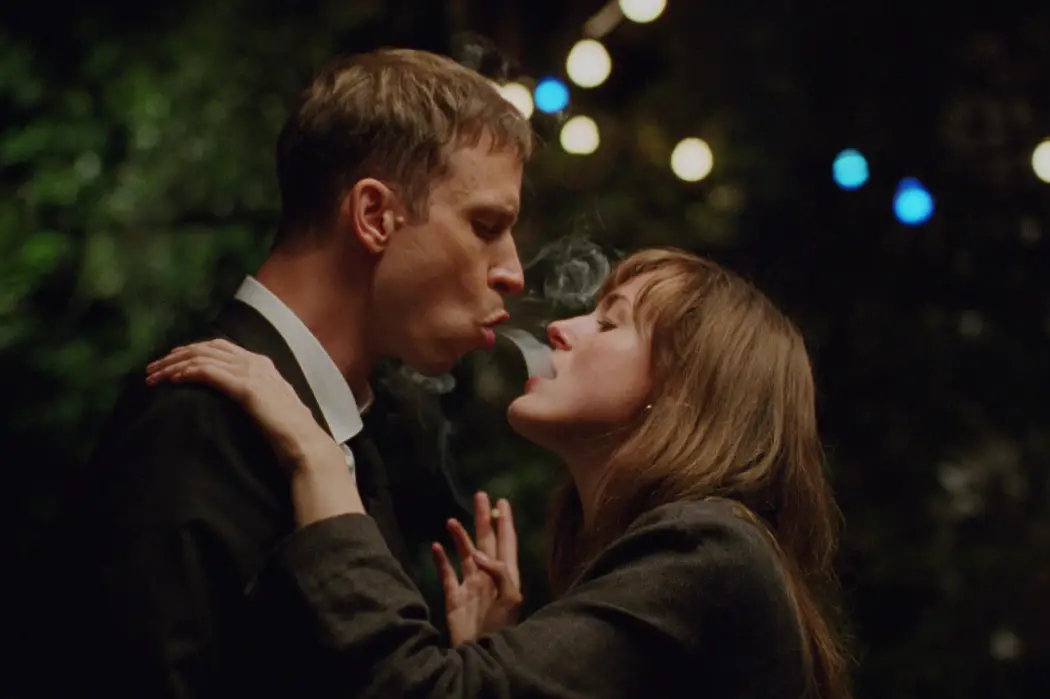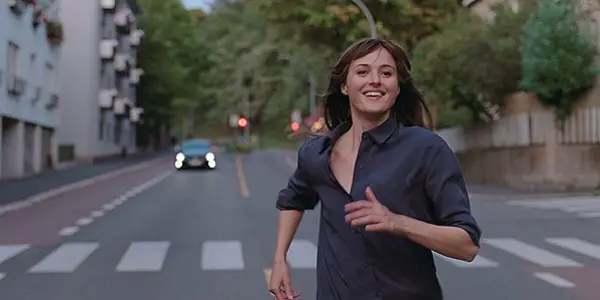NYFF 2021: THE WORST PERSON IN THE WORLD

Lee Jutton has directed short films starring a killer toaster,…
On the surface, the latest film from Norwegian director Joachim Trier—the third installment in what has been dubbed his Oslo trilogy—is yet another in a long line of films about young people struggling to figure out what they’re supposed to do in love and in life; a coming-of-age rom-com with a dark streak running through it. Yet The Worst Person in the World also rises above such generalizations, refusing to take the easy way out and provide the characters with the pat, pleasant resolutions to their problems. That’s just part of what makes it so great. Featuring a fiery lead performance from Renate Reinsve, which won her Best Actress at this year’s Cannes Film Festival, the film is a powerful, painfully relatable depiction of one aimless young woman and her various mishaps as she attempts to navigate the road to what we call “adulthood.” You’ll definitely laugh, and you might cry, too; whatever the case may be, you’re guaranteed to be moved by Trier’s empathetic storytelling.
Revolving Doors
Told in twelve chapters with a prologue and epilogue, The Worst Person in the World begins by introducing us to our plucky heroine, Julie (Reinsve), as she buries herself in her medical school textbooks. The film’s narrator wastes no time in telling us that the only reason Julie chose to become a doctor was that medical school had the most difficult admissions requirements; she’s more interested in proving that she’s brainy enough to be a doctor than actually becoming one. Indeed, she soon decides she’s more fascinated with the mind than the body and decides to embark on the study of psychology instead (and an affair with one of her professors, natch).
Yet before the audience has a chance to absorb this new information, Julie has changed her mind yet again: this time, she decides that she’s fated to pursue a career as a photographer, as well as a love affair with an older, successful cartoonist named Aksel (Anders Danielsen Lie, whose presence in both this and Bergman Island makes him the unofficial king of the 2021 festival season). Aksel’s feeble attempt to break it off with Julie early on—by telling her they’re at too different of stages in their lives to make it work—just makes her fall for him harder. Yet despite their undeniable passion for each other, friction is present in their relationship from the start. Aksel’s friends are in their early-to-mid-forties, like him, with established careers and families; Julie is on the cusp of 30 and working part-time in a bookstore. She isn’t sure if she ever wants children, but she knows she definitely doesn’t want them right now, much to Aksel’s chagrin. Neither of them is willing or able to change for the other, and the dark clouds of their differences hover on the horizon of their happiness.

After absconding from a glamorous party at which Aksel and his latest graphic novel are the toast of honor, Julie crashes a wedding reception and has one of the most hilarious meet-cutes of all time with one of the guests, a young man named Eivind (Herbert Nordrum); they are mutually drawn to each other but both refuse to do anything that could be considered cheating and have a great deal of fun pushing the boundaries of what that might be. Is it worth sabotaging her well-worn relationship with Aksel for something fresh and exciting? Julie’s inability to stick to one career, one man, one passion is established so early in The Worst Person in the World that it is easy to guess what choice she’ll make. However, what follows that fateful decision is anything but predictable, an emotional rollercoaster the likes of which will feel familiar to anyone who has ever experienced the consequences of one’s youthful impetuousness, for better or for worse. What Julie loses along the way is just as important as what she gains; both help her finally come to terms with what she wants out of life for herself.
No Regrets for Our Youth
Julie is a character who is frustrating and energizing in equal measure; she self-sabotages in ways that make you want to shake her by the shoulders, but when she stands up for herself and refuses to buckle to other’s expectations, you’ll feel your heart swelling in pride. Part of that is due to Trier’s deeply sympathetic script, co-written with regular collaborator Eskil Vogt, which manages to avoid turning a judgmental eye onto Julie; even in her darkest moments, the film resists the urge to remark “I told you so.” It’s also laugh-out-loud funny, mining the most awkward moments in life for maximum hilarity, which makes the tragic turn it takes in the final third pack all the more powerful a punch.
As shot by cinematographer Kasper Tuxen, the city of Oslo and the people who populate it have never looked more beautiful; the film’s use of rack focus and expressionistic angles direct your eyes to areas you may not have originally noticed but will be glad you did. Like Julie, the city of Oslo can also be viewed as being in flux, torn between the old world of the crumbling Akershus fortress and the modern metropolis symbolized by the Barcode Project (something that Eivind embarrassingly admits he actually likes looking at during his first meeting with Julie). It’s imperfect and excessively expensive, but if you’ve ever been to Oslo, you understand its appeal, and that appeal is perfectly captured in The Worst Person in the World.
As played by Danielsen Lie, Aksel is intriguing and annoying in equal measure—he too often mistakes age and experience for actual wisdom—but when given the chance to speak eloquently and at length on his feelings for Julie, he is guaranteed to break your heart. By contrast, Nordrum’s Eivind is stuck in a part-time job as a barista and unsure where to go next, apart from Julie’s arms; his similarities to our heroine ensure that neither of them is ever going to push each other out of the mutual comfort zone they have created, but one can see the appeal in that, at least for a while.
And while The Worst Person in the World—despite its title—might be a little too in love with Julie, as embodied by Reinsve, with her fresh-faced beauty and livewire energy, who can blame it? Her radiant performance is one that makes Julie easy to root for in spite of her flaws. The most prominent of those flaws is also the most relatable; it’s the incredible indecisiveness coupled with insecurity that makes it impossible for her to fully commit to anything or anyone. Who hasn’t experienced this feeling at least once and later mulled over the consequences, the “what ifs” and “could have beens” that might have redefined one’s life?

If there is one message to take away from The Worst Person in the World, it’s that this feeling of unrest is a regular part of growing up and finding oneself, and one that should be embraced rather than regretted. When Julie runs out the front door of the flat she shares with Aksel, freezing him and everyone else in time with the flick of a light switch, she doesn’t fear the unknown waiting for her; she’s beaming with joy and excitement. Her heart is on the verge of bursting, and as you watch her, yours will be too. It’s a beautiful moment of spontaneity that Trier elevates to truly glorious by injecting it with emotionally authentic magical realism, for even if you have never been able to stop time and make the rest of the world fade into the background, you have surely felt as though you have. It’s moments like this that make The Worst Person in the World such a deeply affecting movie.
Conclusion
As a woman, I can’t help but be surprised and impressed that two of the best films about women growing up to have come out in recent years were not only both directed by men but the same man. The Worst Person in the World is grounded in reality while Thelma used science-fiction and horror tropes to depict a young woman’s coming-of-age, but both carry Trier‘s signature stamp of authenticity.
What do you think? Are you familiar with the movies of Joachim Trier? Share your thoughts in the comments below.
The Worst Person in the World is currently screening as part of the Main Slate at the New York Film Festival and will be released in the U.S. on October 15, 2021.
Watch The Worst Person in the World
Does content like this matter to you?
Become a Member and support film journalism. Unlock access to all of Film Inquiry`s great articles. Join a community of like-minded readers who are passionate about cinema - get access to our private members Network, give back to independent filmmakers, and more.
Lee Jutton has directed short films starring a killer toaster, a killer Christmas tree, and a not-killer leopard. Her writing has appeared in publications such as Film School Rejects, Bitch: A Feminist Response to Pop Culture, Bitch Flicks, TV Fanatic, and Just Press Play. When not watching, making, or writing about films, she can usually be found on Twitter obsessing over soccer, BTS, and her cat.












